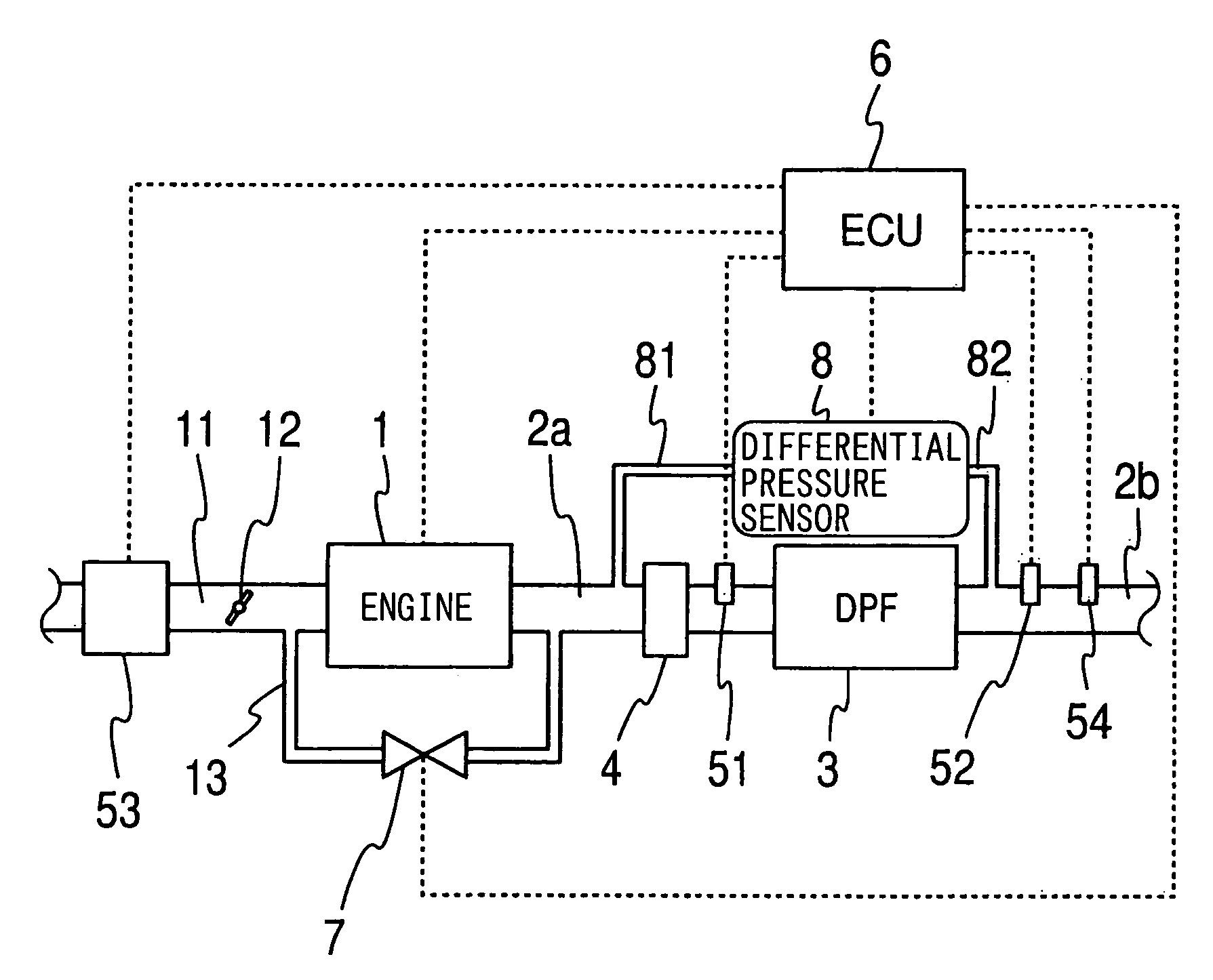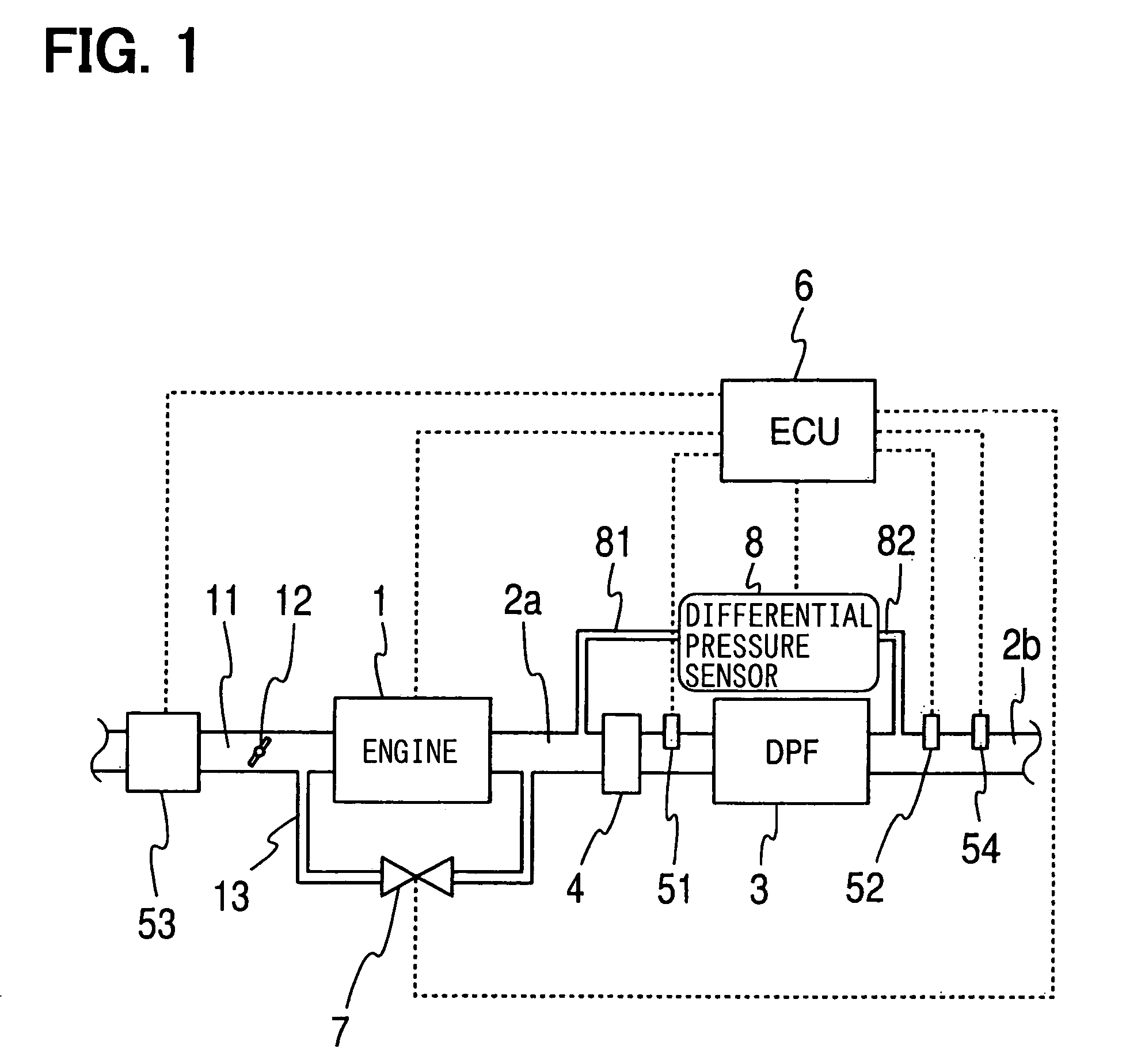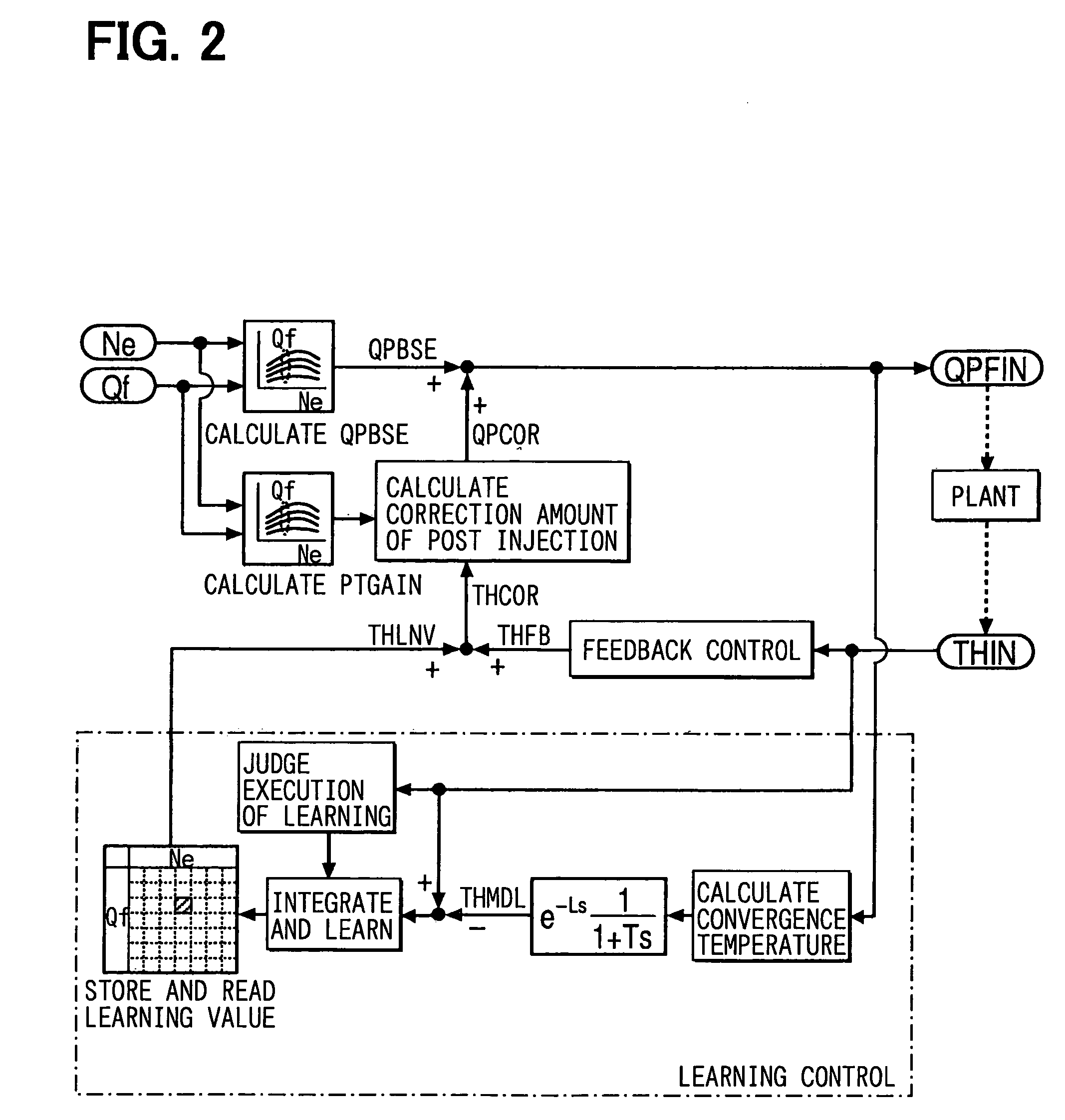Exhaust cleaning device of internal combustion engine
a cleaning device and internal combustion engine technology, applied in the direction of exhaust treatment electric control, electrical control, separation process, etc., can solve the problems of reducing fuel efficiency, dpf temperature suddenly rises, and fuel efficiency reduction in accordance with dpf regeneration becomes low, so as to achieve sufficient learning frequency and improve the effect of learning control precision
- Summary
- Abstract
- Description
- Claims
- Application Information
AI Technical Summary
Benefits of technology
Problems solved by technology
Method used
Image
Examples
Embodiment Construction
[0050]A first embodiment of an exhaust cleaning device of a diesel engine to which the present invention is applied will be hereinafter described. FIG. 1 shows an example of the structure of a system. An oxidation catalyst (DOC) 4 is disposed upstream of a diesel particulate filter (DPF) 3. The DPF 3 is disposed between exhaust ducts 2a and 2b of a diesel engine 1, and the DOC 4 is disposed in the exhaust duct 2a a upstream of the DPF 3. The DPF 3 is a ceramic filter with well-known structure. In the DPF 3, for example, heat-resistant ceramic such as cordierite is molded into honeycomb structure, and many cells being gas passages are sealed in such a manner that inlets or outlets are alternate with one another. While exhaust ejected from the engine 1 flows downstream through porous partition walls of the DPF 3, particulates (PM) are collected and gradually accumulated.
[0051]In the DOC 4 with a well-known structure, the oxidation catalyst is supported on the surface of a ceramic carr...
PUM
| Property | Measurement | Unit |
|---|---|---|
| temperature | aaaaa | aaaaa |
| temperature | aaaaa | aaaaa |
| temperature | aaaaa | aaaaa |
Abstract
Description
Claims
Application Information
 Login to View More
Login to View More - R&D
- Intellectual Property
- Life Sciences
- Materials
- Tech Scout
- Unparalleled Data Quality
- Higher Quality Content
- 60% Fewer Hallucinations
Browse by: Latest US Patents, China's latest patents, Technical Efficacy Thesaurus, Application Domain, Technology Topic, Popular Technical Reports.
© 2025 PatSnap. All rights reserved.Legal|Privacy policy|Modern Slavery Act Transparency Statement|Sitemap|About US| Contact US: help@patsnap.com



